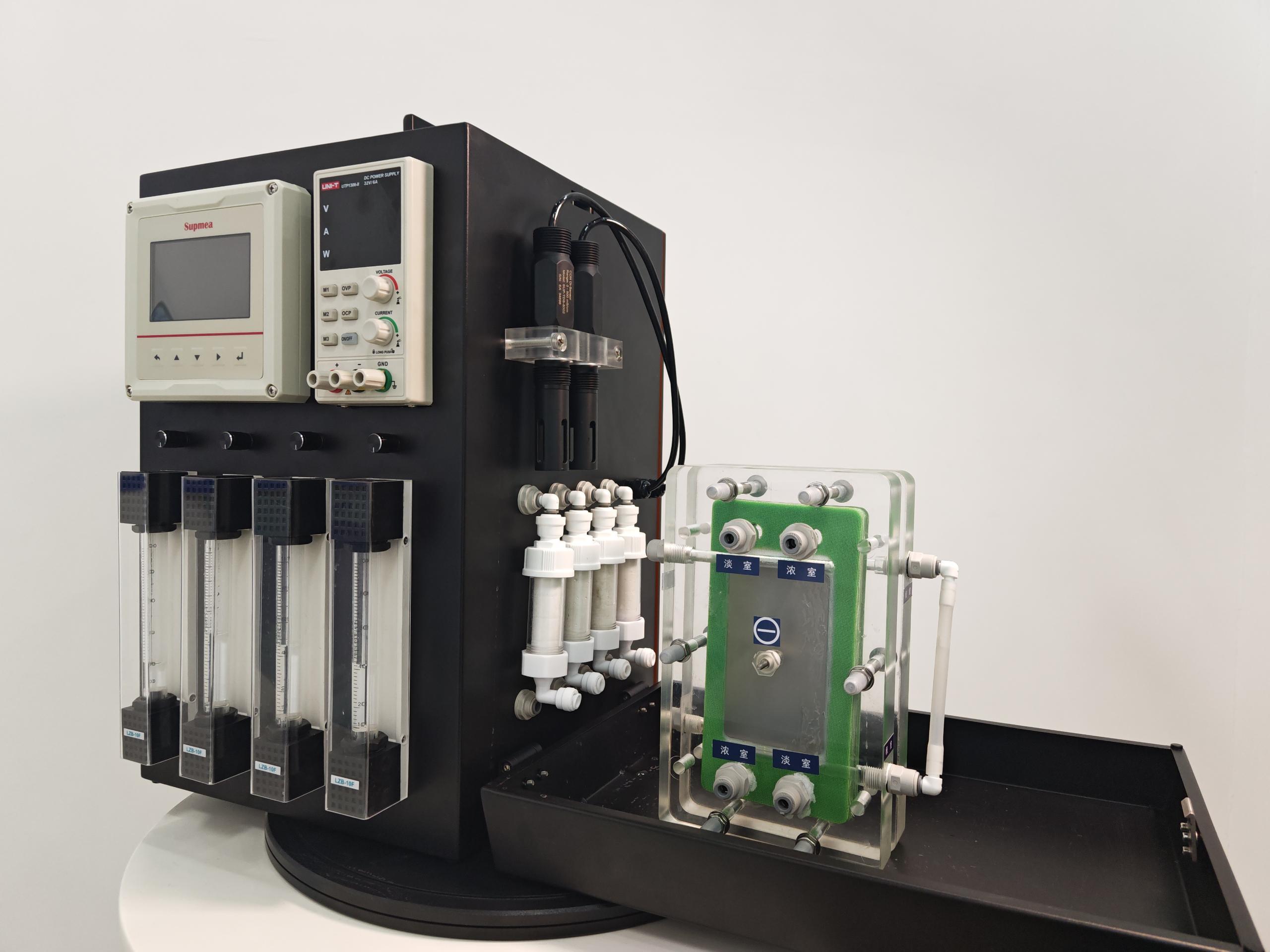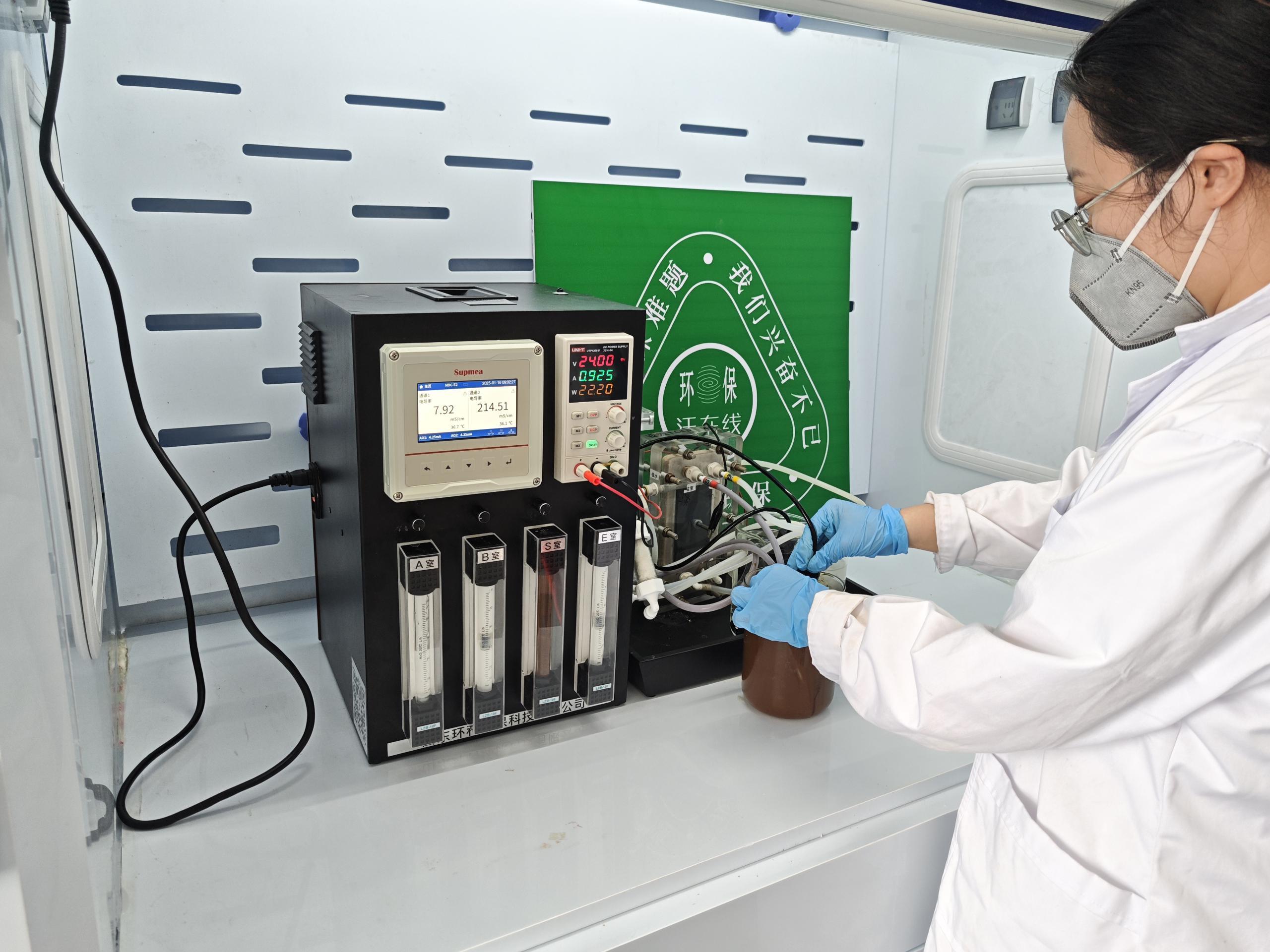11
2025
-
10
Bipolar membrane electrodialysis: triethylamine phosphate desalination and resource utilization
Author:
Triethylamine phosphate is a common by-product in the chemical industry (pesticides, pharmaceuticals, surfactants). Its high salt content leads to high energy consumption and secondary pollution problems in traditional treatments (neutralization, precipitation, evaporation and crystallization), and also wastes triethylamine and phosphoric acid resources. Bipolar membrane electrodialysis (BMED) technology, with its unique ion hydrolysis dissociation mechanism, achieves efficient conversion of salts into acids and bases, providing a new path for their resource utilization.
I. Technical Principles and Core Advantages
1. Bipolar membrane water dissociation mechanism
Bipolar membranes are composed of a cation exchange layer (N-type), an intermediate catalytic layer, and an anion exchange layer (P-type). Under a direct current electric field, water molecules dissociate into H⁺ and OH⁻ in the catalytic layer: H⁺ moves through the N-type membrane towards the cathode and combines with PO₄³⁻ in the salt chamber to form phosphoric acid; OH⁻ moves through the P-type membrane towards the anode and combines with the salt chamber (C₂H₅)₃NH⁺ to form triethylamine. The entire process does not require any chemical reagents, reducing alkali consumption and hazardous waste generation.
2. Resource utilization and environmental benefits
Triethylamine recovery: After the evaporation and concentration of the alkali chamber products, triethylamine with a purity of ≥98% can be obtained, which can be reused in production to reduce costs.
Phosphoric acid resource utilization: The products from the acid chamber can be used as raw materials for phosphate fertilizers or as chemical intermediates, achieving closed-loop utilization of phosphorus.
Zero discharge potential: The salt concentration in the effluent from the salt chamber is ≤5%, meeting the standards for reclaimed water and promoting the resource utilization of wastewater.


Ii. Key Points of Technical Implementation
1. Control of influent water quality
BMED is sensitive to influent water and needs to be controlled as follows: SS≤1mg/L (to prevent membrane clogging), Ca²⁺/Mg²⁺≤1mg/L (to prevent scaling), COD≤50mg/L (to prevent membrane fouling), and temperature 5-35℃ (to maintain membrane stability). Impurities can be removed through ultrafiltration and nanofiltration pretreatment.
2. Process parameter optimization
Current density: 10-50mA/cm² (constant current, balanced migration and polarization)
Salt concentration: Influent ≥15% (calculated as NaCl), effluent ≥5% (ensuring high efficiency and low consumption);
Segmented desalination: Three-stage membrane stacks are connected in series, with a single-stage desalination rate of ≥90%.
3. Membrane material selection
Homogeneous membrane: High selective permeability, low resistance, suitable for high-salt complex systems;
Anti-pollution film: Modified films such as graphene coating reduce protein adsorption by over 60% and extend service life.
Domestic membranes: After performance improvement, the cost is 40%-50% lower than that of imported ones, promoting large-scale production.
Iii. Industry Impact and Future Outlook
1. Promote green manufacturing
Carbon reduction: Reduce the energy consumption of fossil fuels through evaporation and crystallization, and lower carbon emissions.
Circular economy: Building a closed loop of "salt - acid and alkali - raw materials" to improve resource utilization rate;
Compliance: Meet the requirement of zero discharge of wastewater.
2. Innovation direction
Membrane material: Develop high-temperature resistant and anti-pollution bipolar membranes to expand application scenarios (such as high-temperature wastewater);
Process integration: Coupled with RO and MBR, it forms a full process of pretreatment - desalination - resource utilization.
Intelligentization: The Internet of Things monitors membrane pressure difference and conductivity in real time to achieve adaptive optimization.
Bipolar membrane electrodialysis provides an efficient and environmentally friendly solution for the desalination and resource utilization of triethylamine phosphate. Through parameter and material optimization, it can achieve high-value recovery of triethylamine and phosphoric acid, facilitating the green and low-carbon transformation of the chemical industry.
Related Products
"Junqi Fang" : An efficient upgrade solution for wastewater biochemical treatment driven by sponge biological fillers
2025-10-29
The Application of Bipolar Membrane Electrodialysis in the Resource Utilization of Lysine Hydrochloride
2025-10-17
Membrane separation - evaporation concentration Synergy: An Innovative Path for the Resource Recovery of Waste Hydrochloric acid Solution
2025-10-15
Membrane analysis technology: Solving the problem of waste acid treatment, creating a new model of "green stripping" of metal ions and acid circulation
2025-10-14
Huanke Environmental Protection Technology
HOTLINE:
Address:Optoelectronic Industry Accelerator in Weifang Hi-Tech Zone, Shandong Province, China
Contact:Zhang Gong
WhatsApp:+8619953608211
Email:eco.eqpt@gmail.com


Consult

TikTok
Copyright © 2023 Shandong Huanke Environmental Protection Technology Co., Ltd
